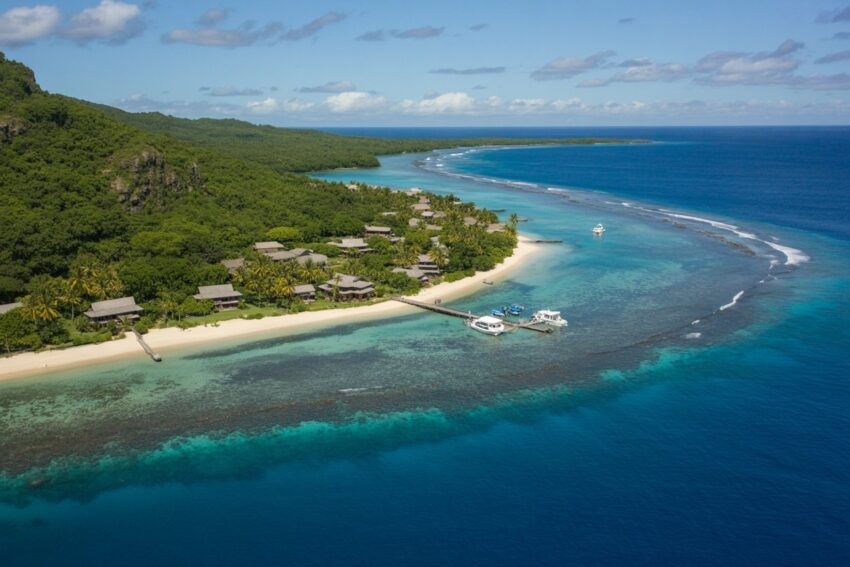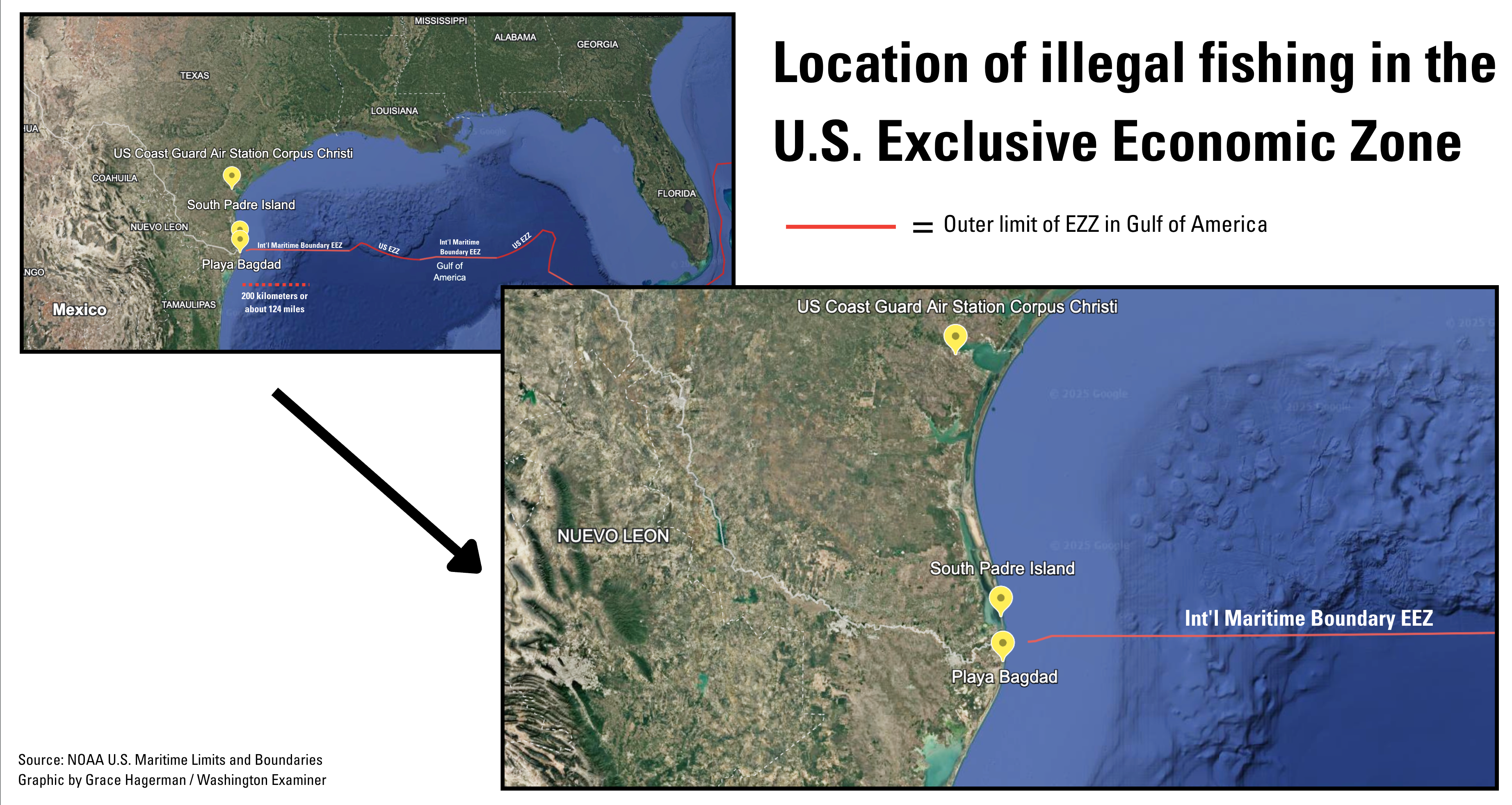Report on Marine Debris Impact on Endangered Species in Hawai‘i: A Case Study and its Relation to Sustainable Development Goals
Incident Summary
Researchers from the Cascadia Research Collective have documented a severe entanglement of an endangered false killer whale (Pseudorca crassidens) off the coast of Lāna‘i, Hawai‘i. The adult male, identified as HIPc373, is a member of the endangered main Hawaiian Islands population. The animal was found with a one-inch floating polypropylene line cutting into its dorsal fin and wrapped around its body. This incident provides a critical case study on the direct threats to marine biodiversity, directly challenging the objectives of the United Nations Sustainable Development Goals (SDGs).
Relevance to Sustainable Development Goal 14: Life Below Water
This event critically underscores the challenges in achieving SDG 14, which aims to conserve and sustainably use the oceans, seas, and marine resources. The entanglement of HIPc373 highlights failures and opportunities related to several key targets:
- Target 14.1: Reduce Marine Pollution: The polypropylene line entangling the whale is a stark example of the persistent threat of marine debris. This incident demonstrates the urgent need to prevent and significantly reduce marine pollution to protect marine life.
- Target 14.2: Protect and Restore Ecosystems: False killer whales are apex predators and an indicator species; their health is reflective of the entire marine ecosystem’s stability. Harm to this endangered population signifies a significant adverse impact on the marine ecosystem, contrary to the goals of sustainable management and protection.
- Target 14.5: Conserve Coastal and Marine Areas: The main Hawaiian Islands population of false killer whales is listed as endangered, with an estimated annual decline of over three percent. Protecting such vulnerable species is fundamental to conserving marine biodiversity and achieving conservation targets.
Response Efforts and Sustainable Development Goal 17: Partnerships for the Goals
The response to this incident exemplifies the collaborative action required by SDG 17, which promotes partnerships to achieve sustainable goals. The ongoing effort involves multiple stakeholders dedicated to marine conservation.
- Data Collection and Assessment: Cascadia Research Collective utilized drone footage and photo identification to document the severity of the entanglement. This data was shared with the National Oceanic and Atmospheric Administration (NOAA).
- Inter-agency Collaboration: NOAA’s disentanglement experts are assessing the data to guide potential rescue efforts. Cascadia’s field crew has been equipped with specialized tools from NOAA to attempt a rescue.
- Multi-Source Funding and Research: The research project is a collaborative effort funded by the State of Hawai‘i, the Pacific Islands Fisheries Science Center, and Dolphin Quest. This partnership (Target 17.16) is vital for generating the scientific knowledge needed (Target 14.a) to understand and mitigate threats to marine species.
Conclusion and Recommendations for SDG Alignment
The case of HIPc373 is a painful reminder of the human impact on marine environments and a direct impediment to achieving global sustainability targets. The whale’s prognosis remains uncertain even if the rescue is successful, due to the risk of infection and impaired feeding ability.
Recommendations aligned with the SDGs include:
- Strengthening SDG 12 (Responsible Consumption and Production): Address the root cause of marine debris by improving waste management and reducing the production and use of single-use plastics and hazardous materials like polypropylene lines.
- Public Engagement and Action: Promote public awareness and action, as recommended by researchers, for individuals to remove ropes, netting, and other debris from the water to prevent future entanglements. This contributes to a citizen-science approach to monitoring and protecting marine environments.
- Continued Scientific Research: Sustain and enhance funding for research initiatives like the Cascadia Research Collective’s field project. Continuous monitoring is essential for understanding population dynamics, identifying threats, and informing conservation strategies in line with SDG 14.
Analysis of Sustainable Development Goals in the Article
1. Which SDGs are addressed or connected to the issues highlighted in the article?
-
SDG 14: Life Below Water
This goal is central to the article, which focuses on the direct threat of marine pollution to marine life. The entanglement of an endangered false killer whale in marine debris highlights the urgent need to conserve and protect marine ecosystems and species from human-caused threats.
-
SDG 15: Life on Land
While the incident occurs in the ocean, this goal is relevant through its focus on protecting biodiversity and preventing the extinction of threatened species. The article explicitly identifies the false killer whale as an “endangered” species whose population is in decline, directly connecting the issue to the broader goal of halting biodiversity loss.
2. What specific targets under those SDGs can be identified based on the article’s content?
-
SDG 14: Life Below Water
- Target 14.1: By 2025, prevent and significantly reduce marine pollution of all kinds, in particular from land-based activities, including marine debris and nutrient pollution.
Explanation: The article directly addresses this target by describing how a false killer whale was “severely entangled in marine debris,” specifically a “one-inch floating polypropylene line.” The call to action for people to “pick up ropes or netting and discard it on land” is a direct measure to prevent this type of pollution.
- Target 14.2: By 2020, sustainably manage and protect marine and coastal ecosystems to avoid significant adverse impacts…
Explanation: The article points out that false killer whales are “indicator species, meaning their health reflects the balance of the entire marine ecosystem.” The entanglement is a “significant adverse impact” on this species and, by extension, the ecosystem. The research and rescue efforts described are actions taken to protect this marine ecosystem.
- Target 14.a: Increase scientific knowledge, develop research capacity and transfer marine technology… in order to improve ocean health…
Explanation: The work of the Cascadia Research Collective, described as an “ongoing field project” in its “12th year,” exemplifies this target. They use scientific methods like “satellite tags, genetic sampling and photo identification to track behavior and health,” which directly contributes to increasing scientific knowledge to improve ocean health and protect marine species.
- Target 14.1: By 2025, prevent and significantly reduce marine pollution of all kinds, in particular from land-based activities, including marine debris and nutrient pollution.
-
SDG 15: Life on Land
- Target 15.5: Take urgent and significant action to reduce the degradation of natural habitats, halt the loss of biodiversity and, by 2020, protect and prevent the extinction of threatened species.
Explanation: The article’s subject is an “endangered false killer whale.” It states the population is “listed as endangered, with scientists estimating a decline of more than three percent each year.” The entanglement is a direct, life-threatening event that contributes to this decline, highlighting the urgent need for action to prevent the extinction of this threatened species.
- Target 15.5: Take urgent and significant action to reduce the degradation of natural habitats, halt the loss of biodiversity and, by 2020, protect and prevent the extinction of threatened species.
3. Are there any indicators mentioned or implied in the article that can be used to measure progress towards the identified targets?
-
Indicators for SDG 14 (Life Below Water)
- Implied Indicator for Target 14.1: The article implies an indicator through the documentation of the entanglement incident. The frequency of marine animal entanglement in debris serves as a direct measure of the impact of marine pollution. The researcher’s comment, “We’ve never documented one of these individuals entangled in marine debris before,” suggests that tracking such incidents is a key metric.
- Implied Indicator for Target 14.2: The article explicitly identifies the false killer whale as an “indicator species.” This implies that the health, population trends, and mortality rates of key indicator species are used as a proxy to measure the overall health and integrity of the marine ecosystem.
-
Indicators for SDG 15 (Life on Land)
- Implied Indicator for Target 15.5 (related to Indicator 15.5.1: Red List Index): The article provides data points relevant to this indicator. It specifies the species’ conservation status (“endangered”) and its population trend (a “decline of more than three percent each year”). These metrics are used to assess extinction risk and measure progress toward protecting threatened species.
4. Table of SDGs, Targets, and Indicators
| SDGs, Targets and Indicators | Targets | Indicators |
|---|---|---|
| SDG 14: Life Below Water | 14.1: Prevent and significantly reduce marine pollution of all kinds, including marine debris. | Implied: Frequency and severity of marine animal entanglement in debris (e.g., the documented case of the false killer whale entangled in a polypropylene line). |
| SDG 14: Life Below Water | 14.2: Sustainably manage and protect marine and coastal ecosystems to avoid significant adverse impacts. | Implied: Health and population status of indicator species (the article identifies the false killer whale as an “indicator species” whose health reflects the ecosystem’s balance). |
| SDG 14: Life Below Water | 14.a: Increase scientific knowledge and develop research capacity to improve ocean health. | Implied: Ongoing scientific research projects and data collection methods (e.g., the Cascadia Research Collective’s 12-year field project using satellite tags and genetic sampling). |
| SDG 15: Life on Land | 15.5: Take urgent action to halt the loss of biodiversity and prevent the extinction of threatened species. | Implied: Conservation status and population trends of endangered species (the article states the false killer whale is “endangered” with a population “decline of more than three percent each year”). |
Source: kitv.com







